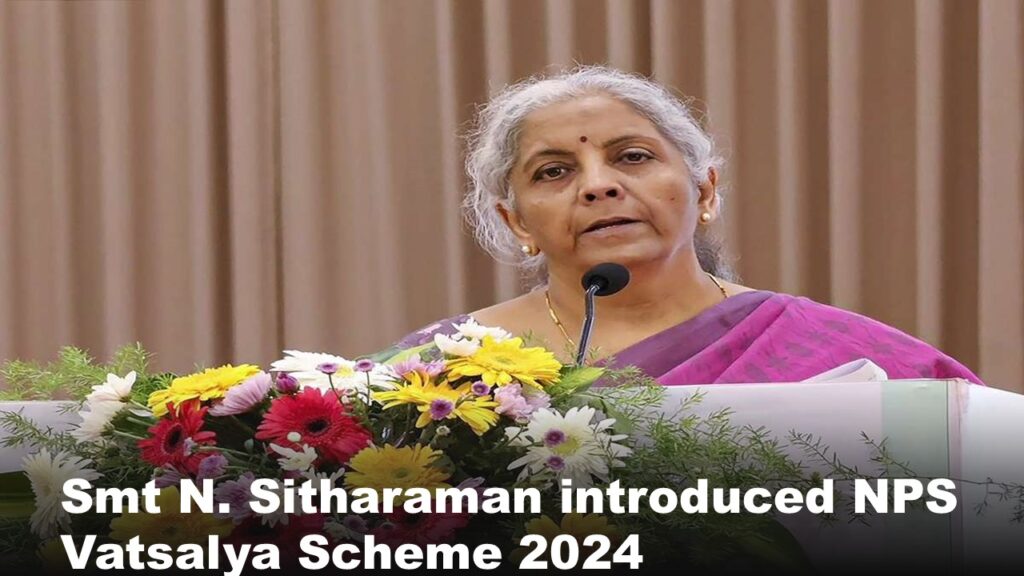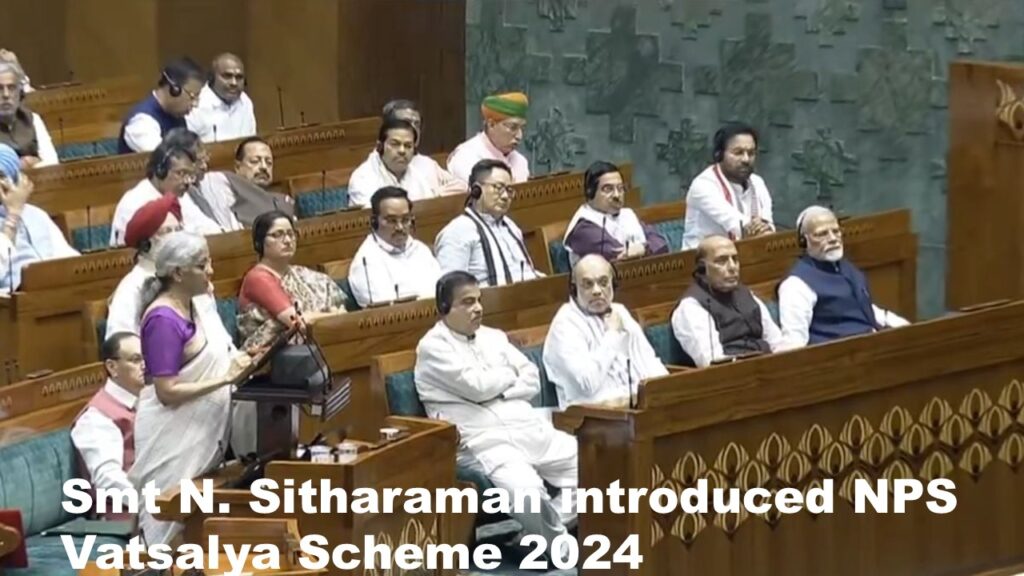The NPS Vatsalya Scheme, introduced in the Union Budget 2024-25, represents a significant step towards fostering financial literacy and savings among children. This plan looks to motivate parents and guardians to invest in the National Pension Scheme (NPS) on behalf of their young children, thereby securing their future. Below is a clear look at the NPS Vatsalya scheme, with its features, benefits, and what it entails for parents and guardians.
Objective of NPS Vatsalya
The primary objective of the NPS Vatsalya Scheme is to provide a structured savings plan that allows parents and guardians to contribute towards the retirement savings of their children. As the cost of living continues to rise and future financial challenges become increasingly unpredictable, this scheme is designed to instill a culture of saving early in life.
Key Features
- Eligibility:
- The scheme is open to parents or guardians of minor children, allowing them to start an NPS account dedicated to their children.
- Minimum Investment:
- Parents can start investing with a nominal amount of ₹1,000 annually. This low entry barrier makes the scheme accessible to a wider section of society.
- Flexible Contributions:
- Beyond the minimum investment, the scheme allows for flexible contributions. Parents can opt to invest more than the minimum amount based on their financial capacity and goals.
- Tax Benefits:
- The tax benefits of this NPS Vatsalya scheme are under Section 80C of the Income Tax Act. It may be availed of the contributions given to the NPS Vatsalya scheme. This could significantly enhance the affordability of investing for parents.
- Investment Options:
- The scheme offers a variety of investment options, similar to the traditional NPS. Parents can choose the allocation of their investments among various asset classes such as equity, corporate bonds, government securities, and alternative investments. This new NPS Vatsalya Scheme has flexibility and allows for tailored investment strategies based on the market risk appetite and financial goals.
- Compounding Benefits:
- One of the standout features of the NPS Vatsalya Scheme is the potential for compounding returns. By starting investments early, parents can take advantage of compounding, potentially growing their investment from a small annual contribution to a substantial corpus by the time the child reaches adulthood.
- Lock-in Period:
- The funds in the NPS Vatsalya account are locked in until the child reaches a certain age, typically 18 years. This ensures that the investment serves its purpose of providing financial security for the child’s future.
- Pension Corpus:
- Upon maturity, the accumulated funds can be utilized for various purposes, including higher education, marriage, or starting a business. This flexibility allows the funds to be directed towards significant life events, ensuring that the child is well-supported as they transition into adulthood.

Benefits of NPS Vatsalya
- Financial Security:
- By investing in this scheme, parents can create a financial safety net for their children, safeguarding them against unforeseen circumstances.
- Encouragement of Saving Habits:
- Early investment encourages children to develop a saving mindset, which can benefit them throughout their lives.
- Retirement Planning:
- While primarily aimed at children’s future needs, the NPS Vatsalya scheme also serves as a stepping stone for parents to understand retirement planning and financial management.
- Educational Opportunities:
- The funds accumulated under this scheme can facilitate access to higher education, which is becoming increasingly expensive.
- Social Security:
- As the scheme contributes to a larger pension corpus, it aligns with the government’s vision of enhancing social security measures for future generations.
How to Enroll
- Account Opening:
- Parents can open an NPS account for their minor child through any NPS-regulated financial institution, including banks and financial services companies.
- Documentation:
- To get the benefits of this scheme You typically have to provide proof of identity for the parent or guardian and the child to the govt, and you have to provide the child’s birth certificate.
- Investment Setup:
- Once the account is opened, parents can set up a structured investment plan, deciding on the frequency and amount of contributions.
- Monitoring Investments:
- Regularly monitoring the performance of investments is crucial. The NPS platform provides online access for parents to check the status of their investments.

List of government Stocks in india 2024
Upper Circuit and Lower Circuit in the Share Market and difference
Challenges and Considerations
While the NPS Vatsalya Scheme offers numerous benefits, there are challenges and considerations that parents should be aware of:
- Market Risks:
- Like any investment in equities or other market-linked instruments, there are inherent risks involved. Parents should assess their risk tolerance and choose investment options accordingly.
- Lock-in Period:
- The lock-in period, while beneficial for long-term planning, may limit liquidity. Parents should consider their financial needs and ensure they have other savings for immediate requirements.
- Awareness and Education:
- There may be a lack of awareness regarding the nuances of the NPS Vatsalya Scheme. Financial literacy is essential so that parents can make informed decisions about investments.
Practical Implications
- Implementation: To make NPS Vatsalya work, there will need to be appropriate awareness campaigns teaching parents about the benefits and how the scheme works.
- Monitoring Performance: Parents must actively monitor the performance of their investments. The NPS platform provides tools for tracking growth, making it easier for families to adjust their contributions or investments as needed.
- Financial Planning: Families may need to integrate this scheme into their broader financial planning strategies, ensuring that they balance immediate needs with long-term savings goals.
- Potential Challenges: While the scheme has many advantages, potential challenges include market volatility affecting investment returns and the necessity for parents to commit to regular contributions.
Conclusion
The NPS Vatsalya Scheme presents an innovative approach to financial planning for children, encouraging parents to invest in their children’s future while reaping the benefits of compounding and tax incentives. By understanding the scheme’s features and benefits, parents can make informed choices that align with their long-term financial goals. This initiative not only aims to secure the financial future of children but also contributes to a broader culture of saving and financial prudence within families. As the scheme gains traction, it is poised to play a critical role in shaping the financial landscape for future generations. As parents consider their options for their children’s future, this scheme stands out as a viable and beneficial choice that aligns with both short-term and long-term financial goals. By taking advantage of this initiative, families can ensure that they are not only preparing for immediate needs but also paving the way for a secure and prosperous future for their children.

